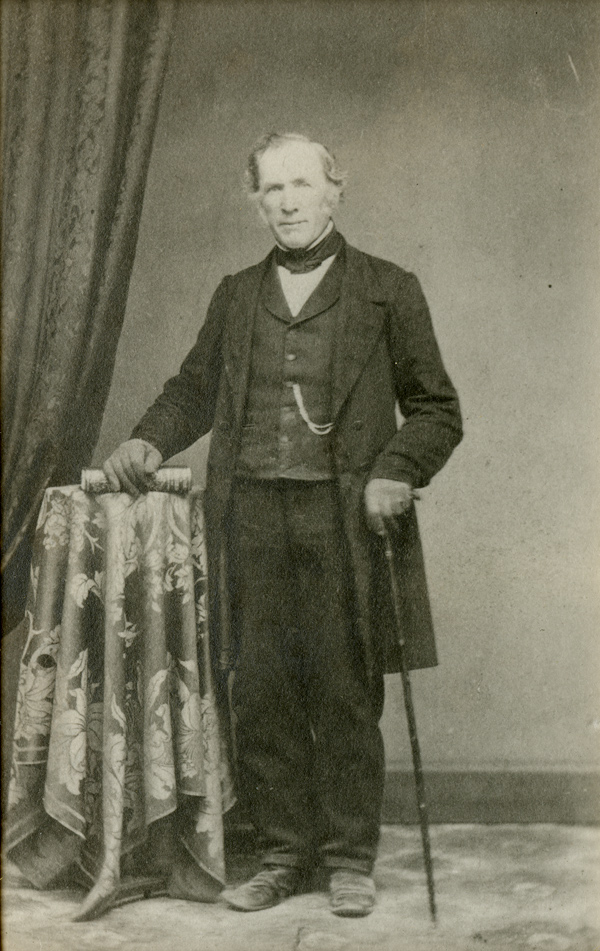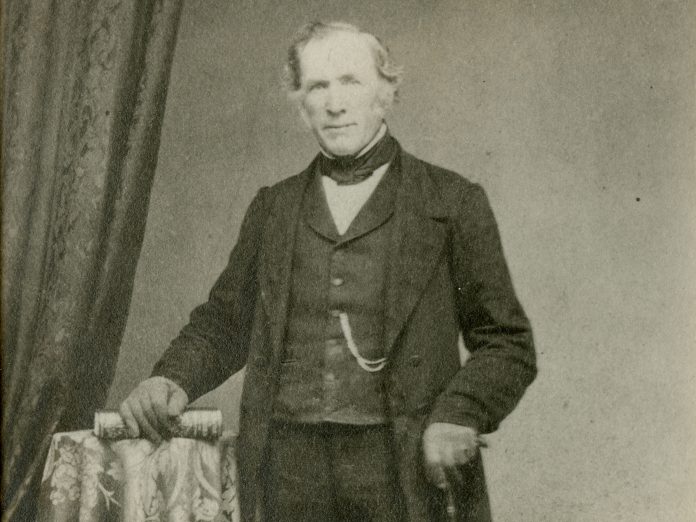[Need to catch up? Read part one and two.]
By Dave Allston –
This is the last of my three-part series about the Hintons, one of the founding families of Hintonburg. In my previous column, I described how Joseph Hinton and his son Robert Hinton helped establish Nepean’s town hall, a post office, and the area’s first subdivision of builder lots in the growing community of Hintonburg, a name selected by the early residents.
While Hintonburg was beginning to take shape, the Hintons were experiencing difficult times. Robert lost his second wife in 1875 (Beechwood Cemetery records show the bodies of both of his wives were exhumed from the old Sandy Hill Cemetery and moved to Beechwood in 1876), and Robert himself was in ill health by 1880, so much so that he was unable to farm the property. In response, the family built a small house for Robert and his family on his sister Eliza Jane Grant’s property where the Petro-Canada station now stands at the north-west corner of Parkdale and Wellington. Robert and his six children (who ranged from age 7 to 16) moved into that house and rented out the large farm and still relatively new 21-room farmhouse to tenants.
Robert married for a third time in the summer of 1881, to a recent divorcee, Victoria Elizabeth Lyon. Two years later, Robert’s only daughter Matilda married her stepbrother John Lyon. Sadly Matilda lived only to the age of 26, passing away in 1891.
In September 1881, Joseph’s daughter Maria, wife of William Pittman Lett, was killed by a train reversing on Dalhousie Street. Flags across Ottawa were flown at half-mast for Maria, whom the Ottawa Citizen called: “a lady universally respected as the best of wives and mothers.” The death occurred only a short distance from the Lett’s home at the far north end of Dalhousie. (This home was on a bluff overlooking the Ottawa River that Joseph had built for the couple after reuniting with Maria years after her decision to elope with Lett in 1849.)
In 1883, Robert Hinton and his family moved further west up Wellington, occupying an impressive stone house on the north side of Wellington between what is now Grange and Smirle. This home was built by Ottawa auctioneer and real estate prospector Hector McLean in 1876, and was later the long-time home of the prominent Smirle family. The Hinton family lived in this stone house for only two years, but it was two years of misery, as both Joseph and Robert died in this home.
On Saturday August 9, 1884, 86-year-old Joseph walked 12 miles to visit his daughters at their homes on Dalhousie Street and Echo Drive, then home by Carling Avenue. But it was too much for him. Two days later he began suffering from dysentery. He was so committed to the temperance cause that it took great efforts on the part of his doctor to convince him to take his medication. Joseph stayed with his son’s family in the stone house and began to improve the next day. He insisted on taking some exercise, contracted pneumonia, and passed away in the morning of Wednesday August 13.
Later that day the evening edition of the Citizen memorialized not only Joseph Hinton himself, but the passing of an era in Carleton County’s history: “Death, year after year, is surely and certainly thinning the ranks of the sturdy old pioneers who penetrated the primeval wilderness, cleared away the forests, made the roads, and improved the farms of the County of Carleton. Soon, alas! Too soon, not one of the honoured and energetic old hands, who bore the burden and beat of the day, in the dawn of Carleton’s progress, will be left to tell the almost incredible story of the sufferings, the labours and the difficulties which had to be surmounted in the early settlement of the county. Amongst those belonging to this rapidly disappearing class who have already finished their life’s labourous work and departed, not one Carleton’s first settlers has occupied a more conspicuous and honoured place than Joseph Hinton.”

His funeral was well attended, with many friends and acquaintances from throughout the county travelling to the service at the house.
“The long line of carriages left Hintonburg shortly before three o’clock and slowly wended its way towards Beechwood Cemetery.”
It is there at Beechwood where today a faded and almost forgotten obelisk tombstone still stands over the graves of the Hinton family.
The Hintons were still in mourning when just six months later, on Feburary 16, 1885, Robert Hinton passed away as well, at the much younger age of 53. He had long been suffering from a severe case of chronic phthsis (consumption) in which the body slowly wastes away. Robert’s funeral was one of the largest ever, noted the Citizen.
Robert’s children (aged 12 to 22) began to disperse soon after his passing. The youngest, Jack and William, briefly returned to the house at the corner of Parkdale but moved to Ottawa by 1890, marking the end of the Hinton presence in Hintonburg.
Clifford relocated to Vancouver in 1889 where he played a significant role in the construction of B.C.’s first street railway and electric lighting system. Jack moved to Victoria where he too became a prominent electrician. Jack ironically married Clara Hilson Holland (Andrew’s niece) in 1898.
Thomas moved to Victoria as well, but followed the Klondike gold rush in 1896 and became mining inspector in the Dawson City district and remained in Yukon the rest of his life.
William P.L. Hinton appears to have been the last of the Hinton children to remain in Ottawa. By 1907 he’d moved first to Montreal, and soon after to Manitoba. In 1887 he began a career with the Canadian Atlantic Railway (later Grand Trunk Railway) where he worked his way up to vice president and general manager. The town of Hinton, Alberta is named after him. He died in Winnipeg in 1955, the last of Robert’s children.
Incredibly, Joseph’s daughter Eliza Jane Grant lived to the age of 102, passing away in 1935. His other daughter, Hannah Patterson, lived on her property, called “Inkerman Cottage” until 1909. This was located alongside the canal where her family name lives on today as Patterson’s Creek.
The old Hinton farm property was sold in April 1887 to Andrew Holland, the official Senate reporter, and former proprietor and editor of the Citizen. He moved into the farmhouse, but his interest was largely investment driven, soon forming the Ottawa Land Association with the owners of the Ottawa Electric Railway. The syndicate ran streetcars through the farm and sold the adjoining lots.
The significance of Joseph Hinton cannot be understated. The neighbourhood we appreciate today as Hintonburg, and a long line of successful descendants across Canada, are an incredible legacy for a young stowaway who left Ireland in 1815 for the unknown. It has been a pleasure to research and share the Hinton story.
Dave Allston is a local historian and the author of a blog called The Kitchissippi Museum. His family has lived in Kitchissippi for six generations. Do you have early memories or photos of Hintonburg? Send your email to stories@kitchissippi.com or leave your comment below.
